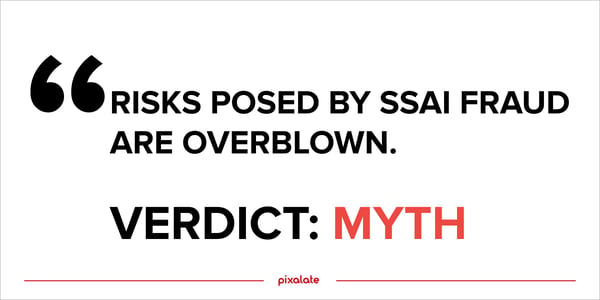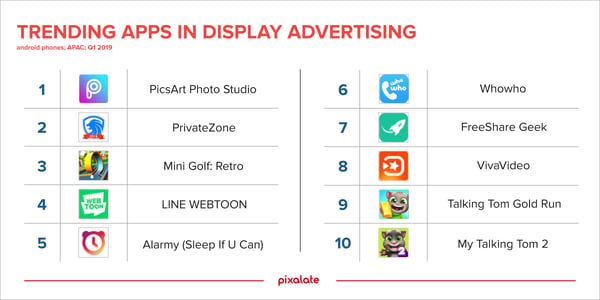
This week's review of ad fraud and quality in the digital advertising space.

Pixalate recently hosted a webinar titled: “The Price of Anarchy in OTT/CTV: How Fraudsters Exploit Security Gaps in SSAI.” This webinar reviewed the use of Server-Side Ad Insertion (SSAI) in OTT/CTV, including latest industry standards, measurement challenges, ad fraud risks. Read the blog recap or watch the full webinar below:

The biggest vulnerability in the OTT/CTV industry is the widespread use of Server-Side Ad Insertion (SSAI). According to Pixalate data from Q2 2019, over one-third (38%) of all programmatic OTT/CTV ad transactions are delivered via SSAI.
This post demystifies OTT/CTV ad fraud by debunking common myths about SSAI, which is also referred to as ad stitching.

This post brings you the top 30 trending apps in APAC based on programmatic ad volume. Key takeaway: APAC Android users are big on the photo and video apps, while Games and Social Networking apps combine to account for 40% of the top trending iOS display apps.

New research from Juniper Research notes that "advertising fraud will waste $100m of daily ad spend in North America alone by 2023," reported The Drum. These numbers are "well beyond current daily fraud wastage ($44m a day)."

"A malicious software campaign tied to a Chinese internet company has exploited known vulnerabilities in Android mobile phones to infect roughly 25 million devices as part of a far-reaching ad fraud scheme," reported CyberScoop.
*By entering your email address and clicking Subscribe, you are agreeing to our Terms of Use and Privacy Policy.
These Stories on Weekly Recaps
*By entering your email address and clicking Subscribe, you are agreeing to our Terms of Use and Privacy Policy.

Disclaimer: The content of this page reflects Pixalate’s opinions with respect to the factors that Pixalate believes can be useful to the digital media industry. Any proprietary data shared is grounded in Pixalate’s proprietary technology and analytics, which Pixalate is continuously evaluating and updating. Any references to outside sources should not be construed as endorsements. Pixalate’s opinions are just that - opinion, not facts or guarantees.
Per the MRC, “'Fraud' is not intended to represent fraud as defined in various laws, statutes and ordinances or as conventionally used in U.S. Court or other legal proceedings, but rather a custom definition strictly for advertising measurement purposes. Also per the MRC, “‘Invalid Traffic’ is defined generally as traffic that does not meet certain ad serving quality or completeness criteria, or otherwise does not represent legitimate ad traffic that should be included in measurement counts. Among the reasons why ad traffic may be deemed invalid is it is a result of non-human traffic (spiders, bots, etc.), or activity designed to produce fraudulent traffic.”

